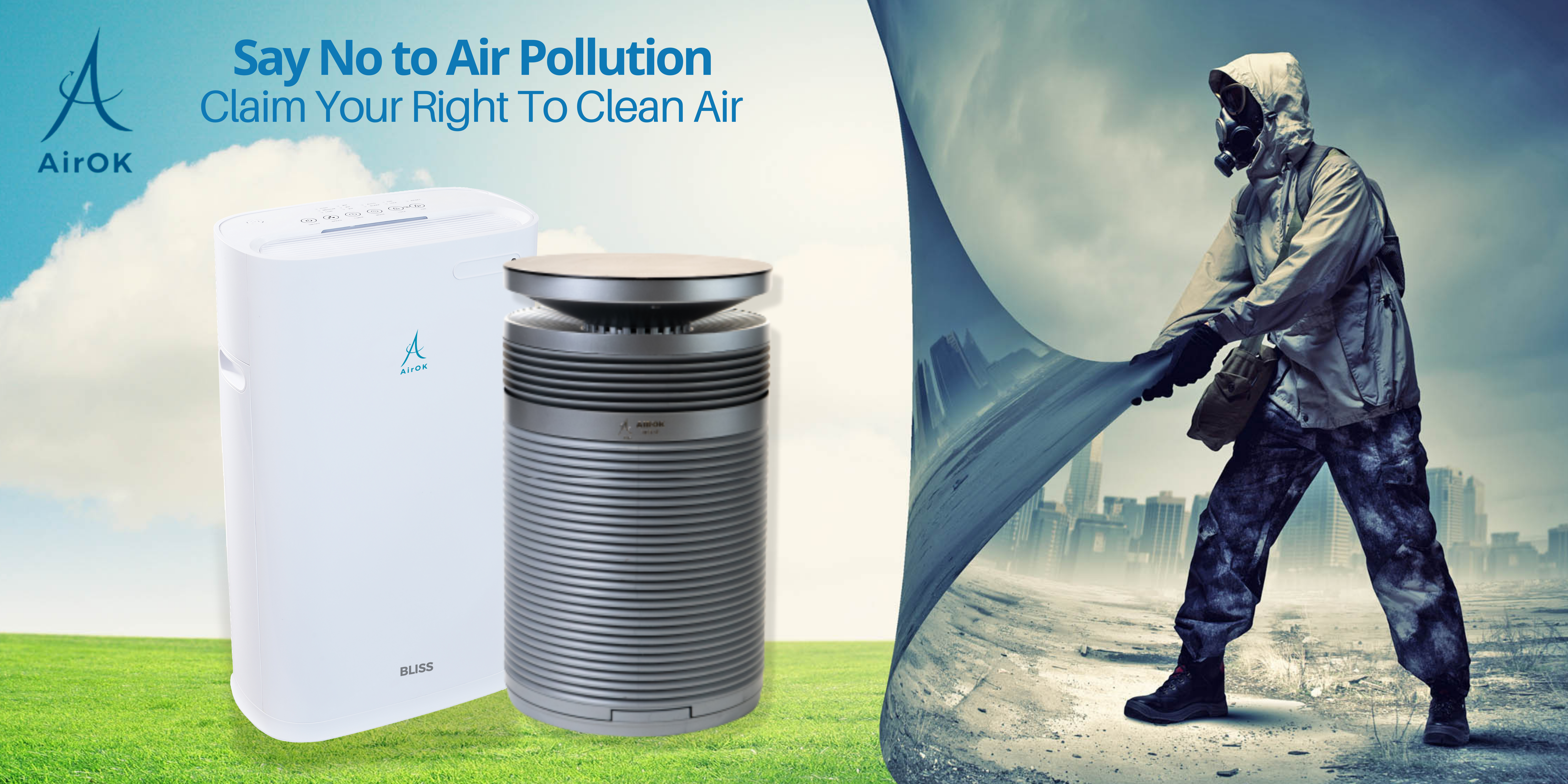- Your cart is empty
- Continue Shopping

12 Best Ways to Reduce Air Pollution and How can you control it.
12 Best Ways to Reduce Air Pollution and How can you control it.
More and more people have started to link air pollution and health problems as air quality concerns have started to increase. Air pollution exposure has a direct relation to respiratory conditions , heart strokes, cancer and other medical problems. Over 120,000 people died in India in 2020 as a result of air pollution according to the Greenpeace Southeast Asia Analysis of IQAir data.
As individuals, we don’t have any control over outdoor air pollution, however there are steps you can take to improve air quality that you breathe in each day. Firstly, awareness is the key, and when you have a knowledge of how you are exposed to air pollution, you can figure out the best ways to steer clear. Here are a few air quality tips that you can use to start breathing easier today.
What causes air pollution?
Air pollution is caused both naturally and by man-made. To have a good understanding of where most air pollution comes from and to increase public awareness, news have started to report health effects of exposure to air pollution . Some of the primary sources for outdoor air pollution include:
· Traffic exhaust: Some of the mail pollutants from vehicle exhaust emissions are carbon monoxide, nitrogen oxides,hydrocarbons and suspended particulate matter. According to the EPA, some of the compounds in exhaust fumes tend to react with chemicals in the air to form nitrogen dioxide and ozone, two pollutants that contribute to health effects.
· Industrial pollution: This form of pollution causes air, water and land pollution, leading to different forms of illnesses and loss of life all over the world. Pollutants from industrial complexes include carbon monoxide, ozone, and VOCs. These harmful substances can be absorbed by your skin as well as when inhaled causes respiratory issues.
· Combustion: Combustion means burning. In simple words, it’s a chemical change that produces heat and light. Combustion comes from burning of coal, wildfires, outdoor barbecues or indoor fires. It produces airborne pollutants, gaseous chemicals and particulate matter leading to pollution.
Indoor air pollution can also be equally harmful because of poor ventilation causing further buildup of indoor air pollutants. Causes of indoor air pollution include:
· Smoke in the area: Outdoor smoke comes from wildfires, barbecues and firewood burning or burning of coal. Additionally, car exhaust fumes and smog is a very big problem for people living or working near busy areas. When outdoor air pollution is high, pollutants easily come indoors through open windows and doors affecting the indoor air quality.
· Cooking: Harmful levels of indoor pollution are created while you are cooking with a natural gas stove, deep frying on an electric stove causing respiratory problems.
Different wellsprings of indoor air contamination incorporate family cleaning items and synthetic substances, individual consideration items, dust, pet dander and hide, dust bugs and shape spores.
Outdoor and Indoor air pollution solutions
Avoiding bad air inhalation outdoors or indoors is especially important for children, older people and those with lung or heart conditions and also for pregnant women who may be more vulnerable to the effects of air pollution. Below are a few recommended activities or tips to consider for less exposure to bad air:
· Change your outdoor commute routes.
The air pollution concentrations within your city varys from one level to another. You should avoid travelling from the busy roads or where traffic is high in order to decrease the amount of traffic pollution that you breathe in. You should change the time of your outdoor activities also, especially during peak hours.
· Buy a car cabin filter.
Traffic pollution can quickly trap inside of a closed or sealed vehicle. To protect yourself from pollution while driving, you should definitely invest in a car purifier or a filter with carbon and set your car’s air to recirculate while in motion.
· Use pollution masks.
N95 face masks can help filter out airborne particles. Please note that these masks act as a supplement for protections and not as your only line of defense. Practically for effectiveness, these masks must remain sealed tightly around your face which is often hard to do when moving or talking. Still should be used for minimum damage.
· Vent your natural gas stove.
Your stove does not produce as much visible smoke as from a wood fire, it does create harmful byproducts that impacts the indoor air quality. Make sure while cooking your kitchen has an exhaust fan and adequate ventilation to keep pollution level from reaching dangerous levels.
· Read all necessary features of your cleaning and personal care products.
Some of your favorite household products may emulate VOCs like fragrances, irritants and flammable ingredients. Therefore it’s highly recommended to use products labeled no or low VOC’s.
· Use an air purifier. An air purifier can help improve the indoor air quality. However,not all types of air filters remove all harmful airborne pollutants. Our solution, the AirOK purifier, uses proprietary patented EGAPA technology with activated carbon that not only traps the air pollutants but also destroys them.
Whether indoor or outdoor, exposure to air pollution is dangerous and a main cause for detrimental health. However, by learning about the causes of pollution and wisely taking steps to avoid or minimize exposure, you can start protecting your personal health by breathing clean air.



